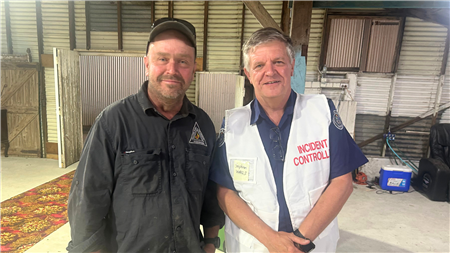Gene editing is already being used to treat a handful of rare genetic diseases; however, most therapies involve breaking or inactivating genes. Precisely fixing disease-causing mutations is far more difficult. This is especially true in the liver, an important organ that could be targeted to treat about 700 genetic disorders. To address this challenge, researchers at Baylor College of Medicine and Rice University have developed a new method of gene therapy called Repair Drive. This technology greatly increases the number of correctly repaired cells in the liver, while eliminating cells with incorrect edits.
The findings, reported in the current edition of Science Translational Medicine, use mouse models focused on liver cells called hepatocytes. Repair Drive gives a selective advantage to repaired hepatocytes with a targeted gene insertion, allowing these healthy cells to divide and regenerate the liver.
“The liver has this inherent regenerative capacity that a lot of other tissues don’t; however, one of the biggest hurdles is editing a sufficient number of cells. For example, homology directed repair (HDR) is the preferred pathway for fixing genes, but it is only active in the roughly 1% of liver cells that are actively dividing. This limitation has made it nearly impossible to correct genetic mutations in a significant portion of the liver,” said Dr. William Lagor, professor of integrative physiology at Baylor and senior author on the study. “Our approach is to take that small percentage of precisely repaired cells and give them a reason to divide, so that they can replace the unhealthy liver cells.”
A key feature of Repair Drive is the use of a small interfering RNA (siRNA) to eliminate the unhealthy cells. Researchers used siRNA to temporarily inhibit an essential gene that is required for survival of hepatocytes. Repair Drive uses gene editing to install a recoded version of this essential gene along with the therapeutic gene. By doing so, unedited or incorrectly edited cells are gradually killed off, creating space for the correctly repaired cells to divide. The researchers found that Repair Drive could increase the amount of precisely repaired cells to greater than 25% from ~1% of the liver in mouse models.
“Think of a yard full of weeds – that is like a diseased liver. The weeds are cells that don’t express the gene that they should be expressing,” Lagor explained. “Using Repair Drive, we come in and kill off the weeds, or the unhealthy cells. In doing so, we basically create space for fresh new grass plugs (i.e. corrected cells) to grow and make a new lawn. We also spent a lot of effort making sure that the weed killing only happens for a brief period of time, and that the lawn is healthy in the long run.”
This research is the result of collaborative work with Dr. Gang Bao‘s lab at Rice University, where the sequencing and bioinformatics analysis were crucial in ensuring the precision of the gene edits. “We had to develop new methods to detect and quantify not just off-target editing, but also the wide variety of gene edits to the intended target site. Many people are unaware of the complexities of performing targeted gene insertion. There are a lot of unintended edits that can occur including large deletions, large insertions and chromosomal aberrations,” Bao explained. “A key finding was that Repair Drive not only increased the number of precisely repaired cells, but also decreased the fraction of cells with incorrect edits.”
Bao is Rice’s Foyt Family Professor of Bioengineering, professor of chemistry, materials science and nanoengineering, and mechanical engineering, and a Cancer Prevention and Research Institute of Texas Scholar. Lagor is the Kyle and Josephine Morrow Endowed Professor in the Department of Integrative Physiology at Baylor, as well as a member of the Center for Cell and Gene Therapy. The two are longstanding collaborators on gene delivery and genome editing.
“We’re not just focusing on one disease, but instead offering a solution that could be applied to a broad range of conditions caused by genetic mutations in the liver,” senior author Lagor said. “Our approach used adeno-associated viruses (AAV) to deliver CRISPR/Cas9. However, we believe the Repair Drive platform has tremendous potential. It should be adaptable to other delivery systems as well as editing strategies. A lot more research is needed to bring this from the lab to a clinical setting, but the potential to treat a wide variety of liver diseases with this approach is very exciting.”
Lagor reiterated that “It is important to acknowledge the incredible interdisciplinary team that contributed to this work. Dr. Marco De Giorgi is a talented assistant professor in our group who led the studies and had the persistence and vision to overcome difficult biological and technical challenges. He worked very closely with associate professor Dr. So Hyun Park in Gang Bao’s group at Rice who led the development of sequencing methods which were critical to our success. We are also grateful to our colleagues at Alnylam Pharmaceuticals for their important expertise and support.”
Other researchers who contributed to the findings include: Adam Castoreno, Mingming Cao, Ayrea Hurley, Lavanya Saxena, Marcel A. Chuecos, Christopher J. Walkey, Alexandria M. Doerfler, Mia N. Furgurson, M. Cecilia Ljungberg, Kalyani R. Patel, Sarah Hyde, Tyler Chickering, Stephanie Lefebvre, Kelly Wassarman, Patrick Miller, June Qin, Mark K. Schlegel, Ivan Zlatev, Rich Gang Li, Jong Kim, James F. Martin, Karl-Dimiter Bissig, and Vasant Jadhav. Researchers are affiliated with Baylor College of Medicine, Rice University, Alnylam Pharmaceuticals, Inc., Texas Children’s Hospital, Texas Heart Institute and Duke University.
The study was supported by the U.S. ³Ô¹ÏÍøÕ¾ Institutes of Health grants U42OD026645, DK124477, HL132840, UG3 HL151545, R01HL152314, DK115461, the American Heart Association 19POST34430092, the Texas Digestive Diseases Morphology Core (P30DK56338) and the Integrated Microscopy Core (DK56338 and CA125123), and with assistance from the Baylor College of Medicine Gene Vector Core. For a full list of contributions and support information click here.








